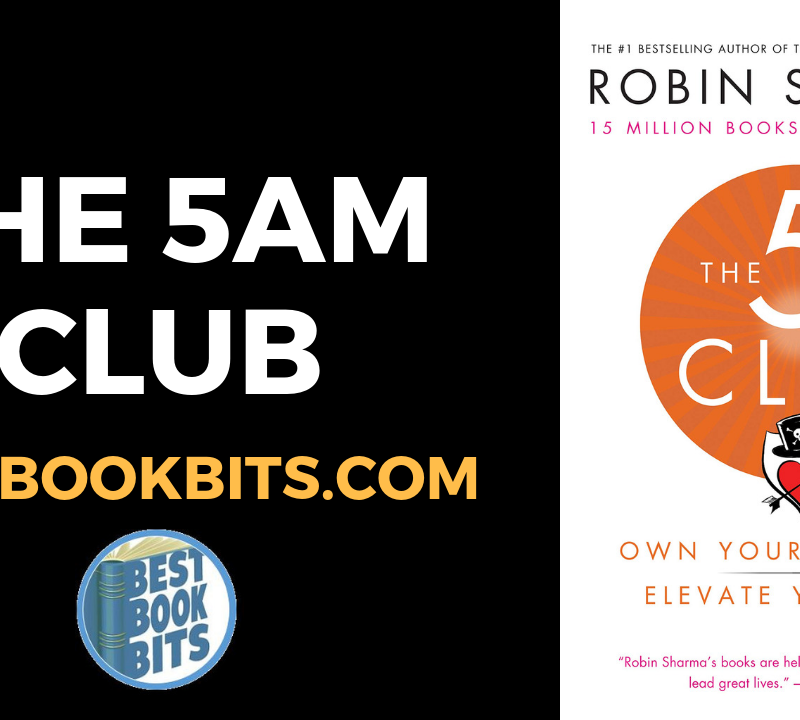★DOWNLOAD THIS FREE PDF SUMMARY HERE
? MY FREE BOOK TO LIVING YOUR DREAM LIFE”
? SPONSOR BESTBOOKBITS BY USING PATREON
? SUPPORT BESTBOOKBITS BY CLICKING THE LINKS BELOW
- 150 PDF Summaries
- Coaching Program
- Subscribe to My Channel
- Website
- Spotify
- Book Club
- Mailing List
- WHY INTELLIGENT PEOPLE PROCRASTINATE (AND HOW NOT TO)
Intelligent people are more often the ones that feel the urge to procrastinate. This is because they are more likely to see and think about the consequences. It’s going to be boring. It’s going to be difficult etc.
Meanwhile, the less-intelligent of the world often just do whatever is in front of them. No thoughts of consequences.
A mere glance at your tax form or to-do list can send intelligent brains on a mental tangent of negative thought-patterns that go so deep they paralyze one from taking action. Unfortunately, all of this over-thinking not only gets us nowhere but it freezes us. So what’s the solution? Develop the “next action” habit…
- DEVELOP THE NEXT ACTION HABIT
To stop procrastinating, shift your focus from the overwhelming immensity of the entire forest (i.e. project) to just a single tree (i.e. a small task). Focus only on the next physical action needed to move forward and do it. The reason this is one of the most effective is because you shift your focus from something overwhelming to something your mind perceives as doable.
- BUILD MOMENTUM: THE PHYSICS OF PRODUCTIVITY
You see, productive people tends to stay productive. Or, as they say, “Nothing succeeds like success.” Productive people tend to get one thing done, then another, and another. One thing spurs them on to the next, and the next. They build up momentum and that pushes them along.
One small step leads to another. Focus on taking action and you’ll find that momentum rolls in that direction.
- MAKE A TASTY TO-DO LIST
Instead of putting “New tires” on your to-do list, put “Call tire store for prices.” Reduce your focus to no more than, “what is the very next physical action I can take? What is the next action?”—and then do it. Make these little actions simple, easy, and actionable.
- THE TWO-MINUTE RULE
If something takes less than two minutes to do, do it now. Just get it out of the way. No more drowning in your inbox or having your apartment look like a landfill. If something takes less than two minutes, take care of it immediately.
- SET MACRO GOALS AND MICRO QUOTAS
We can all relate to how frustrating and disheartening it can be to be stuck doing a single task for an extending period of time.
Books can take months (or years) to complete. That wasn’t going to work. Even chapters can take several days. That wouldn’t work either. So author Anthony Trollope’s solution was to measure his progress in 15-minutes increments. With this approach, Trollope gets a regular dosage of motivating feelings of accomplishment. He gets these small wins every 15 minutes. Small indicators of progress spur you to do more and more. These little accomplishments—much like an effective morning routine—help to quickly develop your day into one with an attitude of effectiveness and productivity.
Find a way to balance the satisfaction of getting things done and pursuing your biggest and most ambitious goals by setting “macro goals” and “micro quotas”.
- TIME BLOCKS
Without truly committing to doing an activity—such as by specifying exactly when, where, and how you will do a specific task—procrastination just becomes too easy.
- First of all, and perhaps most obviously, you need to decide exactly what it is you need to get done. Block out time for it.
- During this time block, eliminate everything else. Put your devices on airplane mode, take advantage of website blocking tools, etc.
To truly overcome procrastination and get stuff done, you need to really, really commit. Set aside a block of time, cut out all distractions. And give yourself no choice but to do whatever it is you need to do.
- THE BUTT-IN-CHAIR METHOD
This 100 percent effective anti-procrastination strategy, as the name implies, involves putting your butt in the chair at your desk for a certain period of time each day. No distractions. Nothing. Just you and your pen and paper (or word document).
The power of committing a block of undistracted time to working on a specific task cannot be overstated. Committing to an undistracted time block is perhaps the single most effective anti-procrastination technique there is.
- AIRPLANE DAYS
A surprising array of people has noted that they are at their most productive when they are 30,000 feet in the air. Why is this? It simply comes down to this: There are no distractions.
Fortunately, you don’t need to dish out thousands of dollars and go on an international flight every time you need an ultra-productive work session. Instead, just pretend that you are going on an all-day flight. Get out of the office, block out of the day on your shared calendar if you have one, and put (and keep) all your devices on airplane mode. Today you are on an (imaginary) international flight.
- CREATE A DISTRACTION TO-DO LIST
Rather than succumbing to the temptation in the moment, simply write down whatever it is you want to do or thought of onto your “distraction to-do list” and get straight back to work. Later on, once all your important tasks are done, you will return to your “distraction to-do list” and freely indulge in it—without the guilt, and without sacrificing productivity.
- THE (10+2)X5 METHOD
You sit down, set the timer for 10 minutes, and work with single-minded focus until the timer rings. For this 10 minutes nothing but working towards the completion of the task(s). After your ten minutes of intense labor are up (phew), you get two minutes—no more, no less—to do whatever on earth you want. Coffee, Reddit, Facebook—anything.
After the two minutes are up, buckle down for another ten minutes of work and repeat the process. This work-play cycle is to be repeated five times, giving you a total of 60 minutes (i.e. one hour) of working and breaking.
- UTILIZE THE POWER OF DEADLINES
Somehow, college students are able to do an entire semester’s work in a single night. No jokes. But how on earth do they do it? Here’s the secret: Deadlines. There’s simply no other way out.
But once we’re out of the education system, we often no longer encounter situations that are as black and white. Moreover, we don’t have the ability to set deadlines that create that sort of pressure for ourselves. Well, we actually can. Using services such as “stickK” (www.stickk.com) or by simply doing it ourselves, we can create precise deadlines that have tangible consequences if missed. “StickK” is one such service that allows you to but money on the line, forcing you to either get your stuff done or lose out on cold hard cash.
- KILL YOUR INNER PERFECTIONIST
Science has shown us that the number one cause of procrastination is what they call “analysis paralysis.” In layman’s terms, “analysis paralysis” means being a perfectionist.
You might hate to hear it, but nothing is perfect. We constantly learn, gain experience, and improve—but we’re never perfect. When it comes to productivity, something is always better than nothing.
Most of the time, the solution is to just hit the ground running. So stop focusing on doing things perfectly and instead simply focus on doing things, period. Jump in headfirst, ready or not, and before you know it, you’ll be swimming.
- HOW TO PROCRASTINATE PRODUCTIVELY
Sometimes, we simply can’t help but procrastinate—no matter how much we don’t want to. Sometimes it just happens, and we can’t deny that. The solution in this case is less obvious: Do things that are easier, but still productive. This is known as the redirect technique. Rather than simply giving up for the day redirect and procrastinate productively. Do some small task that still needs to get done, like returning some calls or replying to some emails.
- THE KIND OF VISUALIZATION THAT LEADS TO PROCRASTINATION (AND THE KIND THAT LEADS TO ACTION)
Many of us visualize success (or failure, or both!)—even if we don’t realize it or believe in the practice. Unfortunately, many of us visualize success in a way that can actually lead to procrastination rather than help us to work toward our goals. Unfortunately, instead of being motivated to go out and make what we just pictured in our mind a reality, we often trick our subconscious brain into believing we have actually already achieved our goals.
Firstly—and most obviously—stop excessively visualizing success. Instead of visualizing the outcome, visualize the process of achieving that desirable outcome. “Take the approach of world-class athletes and Olympians when it comes to visualization. They don’t visualize standing on the highest spot on the podium triumphantly holding aloft their gold medal. What they do instead is visualize the race. They visualize the process of winning gold (or setting a world record), not the outcome.
- THE ONE WORD THAT KILLS PROCRASTINATION
Another factor that can cause procrastination is the way we view ourselves—our self-image.
Telling yourself (or others) that you “can’t” do something impresses upon the mind that you would very much like to do the thing in question but you’re denying yourself of it. The word “don’t”, on the other hand, is far more empowering. Imagine somebody saying “I don’t drink alcohol” or “I don’t eat unhealthy foods” or “I don’t skip gym.” By using the word “don’t”, you impress upon the mind the idea that you’re not the kind of person who skips gym or eats junk food.
- HOW TO CHEAPLY AND QUICKLY OUTSOURCE TASKS
Now, outsourcing might not seem like much of a solution to procrastination. And that’s because it’s not. You’re basically continuing to procrastinate, and just getting the work done by shrugging it off to somebody else.
The way to go about outsourcing can vary depending on the task, however two great options to get started are Upwork (https://upwork.com/) and Fiverr (https://fiverr.com/).
★DOWNLOAD THIS FREE PDF SUMMARY HERE
? MY FREE BOOK TO LIVING YOUR DREAM LIFE”
? SPONSOR BESTBOOKBITS BY USING PATREON
? SUPPORT BESTBOOKBITS BY CLICKING THE LINKS BELOW













